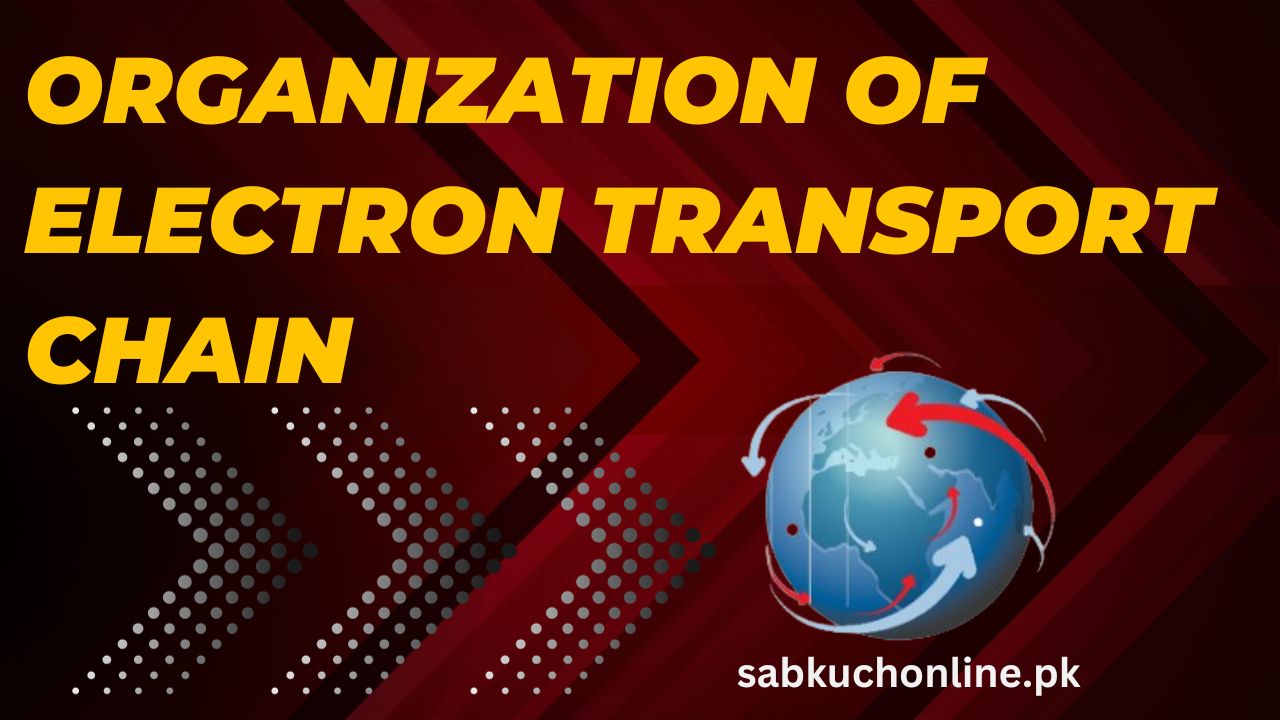The electron transport chain (ETC) is organized in the inner mitochondrial membrane in eukaryotic cells (or the plasma membrane in prokaryotic cells). It is a series of protein complexes and electron carriers that work together to transfer electrons derived from the breakdown of nutrients and facilitate the production of adenosine triphosphate (ATP). The organization of the ETC involves several key components:
- Protein Complexes:
- The ETC consists of several protein complexes, typically labeled as Complex I, Complex II, Complex III, and Complex IV.
- Each complex is composed of multiple protein subunits, and each subunit has specific functions in electron transport.
- Electron Carriers:
- Electron carriers shuttle electrons between the protein complexes. The main carriers include coenzyme Q (ubiquinone) and cytochrome c.
- Coenzyme Q is a mobile carrier that moves within the lipid bilayer of the inner mitochondrial membrane.
- Cytochrome c is a mobile carrier located on the outer surface of the inner mitochondrial membrane.
- Location:
- In eukaryotic cells, the ETC is located in the inner mitochondrial membrane. The inner mitochondrial membrane is highly folded, forming structures called cristae, which provide a large surface area for the organization of the ETC components.
- In prokaryotic cells, which lack mitochondria, the ETC is located in the plasma membrane.
- Arrangement of Protein Complexes:
- The protein complexes are arranged in a specific order along the inner mitochondrial membrane, allowing for the sequential transfer of electrons.
- The arrangement allows for the creation of a proton gradient across the inner mitochondrial membrane.
- Flow of Electrons:
- Electrons flow through the ETC in a series of redox reactions, starting with the donation of electrons from electron donors (such as NADH and FADH₂) and ending with the reduction of oxygen to water.
- The flow of electrons is coupled with the pumping of protons across the inner mitochondrial membrane.
- Pumping of Protons:
- As electrons move through the protein complexes, protons are actively transported across the inner mitochondrial membrane from the mitochondrial matrix to the intermembrane space.
- This creates a proton gradient, with a higher concentration of protons in the intermembrane space.
- ATP Synthesis:
- The proton gradient generated by the pumping of protons is utilized to drive ATP synthesis. Protons flow back into the mitochondrial matrix through ATP synthase, a protein complex embedded in the inner mitochondrial membrane.
- The flow of protons through ATP synthase powers the synthesis of ATP from adenosine diphosphate (ADP) and inorganic phosphate (Pi) in a process known as chemiosmosis.
In summary, the organization of the electron transport chain in the inner mitochondrial membrane allows for the sequential transfer of electrons, the pumping of protons, and the generation of a proton gradient that drives ATP synthesis. This process is a fundamental aspect of cellular respiration and energy production in eukaryotic cells.
